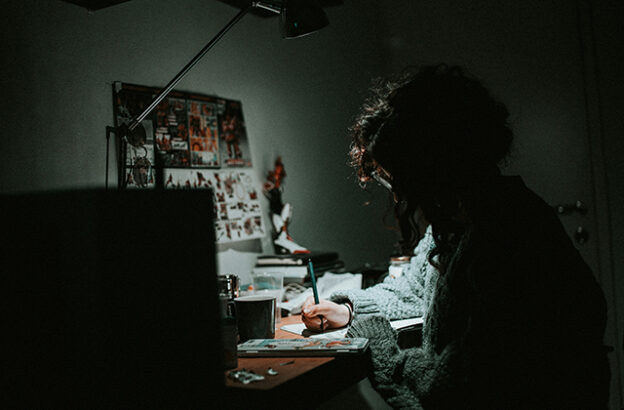Whether you’re working on a feature film, a short video, or a digital ad, storyboards are the visual backbone of any animated project. But storyboards on their own are static—they’re powerful tools, yes, but they need something more to truly come alive. That “something” is motion. Thoughtful, intentional animation tweaks can transform a lifeless sequence of frames into a compelling visual story that resonates emotionally and narratively.
In this article, we’ll explore seven essential animation tweaks that can elevate your storyboard from flat to fantastic—no fancy software required. These techniques are widely used by professionals to bridge the gap between the initial sketch and the final production, especially in a TV storyboard for film pipeline where clarity and fluidity are key.
Let’s dive in.
1. Use Anticipation to Set Up Every Move
Anticipation is one of the foundational principles of animation—and for good reason. It prepares the audience for an action before it happens, making the movement feel more natural and intentional. Even a slight wind-up before a character leaps or a pause before an object falls can give your scene more realism and rhythm.
How to apply it to your storyboard:
Include an additional frame or two showing a character shifting weight, pulling back, or gathering momentum. These “setup” moments make the primary action more powerful and believable.
2. Emphasize Key Poses with Timing Variations
All motion isn’t created equal. A well-drawn storyboard might suggest an emotion, but without timing, it lacks nuance. Think of a sudden head turn versus a slow, contemplative nod—same movement, entirely different impact.
Tweak it like this:
Play with how long each pose is held. Linger on emotional beats and snap quickly through transitional frames to create contrast. This principle can be storyboarded by indicating hold times or even sketching out timing charts alongside your panels.
3. Add Follow-Through and Overlapping Action
Characters are made of multiple parts that move at different speeds. When a cat jumps off a couch, its tail follows slightly behind. That subtle delay adds realism and fluidity, often missing from a rigid storyboard sequence.
Incorporate it in your panels:
Show trailing hair, clothing, limbs, or even background elements like curtains swaying or leaves fluttering. In a TV storyboard for film, these touches often act as cues for animators down the pipeline to preserve naturalistic motion.
4. Use Arcs Instead of Straight Lines
Most natural movement follows an arc. Think of the way a ball bounces, a hand waves, or a bird flies. Straight-line animation feels robotic unless it’s deliberately mechanical.
Storyboard upgrade tip:
Curve your motion paths. Use arcs in your transition arrows between panels to show the trajectory of movement. Even without full animation, curved motion paths can make your intentions much clearer.
5. Include Secondary Action for Depth
Secondary actions support the main action, adding depth and interest without stealing the spotlight. For instance, a character might be talking (primary action) while nervously fidgeting with their hands (secondary action). These minor gestures reveal character, mood, and context.
How to storyboard it:
Layer your panels with additional motion notes. Maybe a character’s foot taps while they speak, or their eyes dart nervously. In a TV storyboard for film, secondary action cues can be essential for voice actors and animators alike to capture full character personality.
6. Master the Use of Smears and Multiples
Smears and multiples are advanced techniques that help sell fast motion in a limited frame rate. Instead of showing just one hand as it swings, show two or three blurred hand positions to convey speed.
Apply this in your drawings:
Use stretch lines, trailing limbs, or repeated shapes in a single panel to indicate rapid movement. This is especially powerful in comedic or action sequences where motion exaggeration plays well. It’s a small tweak that can add a lot of punch.
7. Play with Scale and Perspective
Not all animation impact comes from character movement. Changing the scale and angle of a scene can add dynamism without a single step or gesture. A zoom-in, a pan, or a forced perspective shot can make a simple moment more dramatic.
Storyboard suggestion:
Experiment with cinematic techniques. Draw panels where the camera “moves” closer or further from a subject. Tilt the angle. Use foreground elements to frame a subject. In TV storyboard for film workflows, these techniques translate into strong visual directions for directors and animators.
Bonus Tip: Don’t Forget the Sound
Although not an animation tweak per se, sound design often works hand-in-hand with motion. Leave space in your storyboard for sound cues—door creaks, dramatic silences, footsteps. These elements help your storyboard “breathe” like a finished piece.
Final Thoughts
Storyboards are more than just planning tools—they’re the first draft of your audience’s emotional journey. By applying these seven animation tweaks, you can transform your static visuals into flowing sequences that practically animate themselves in the viewer’s mind.
Whether you’re creating a pitch for a studio, refining a scene in your indie project, or building a TV storyboard for film, these techniques can help ensure your ideas are communicated clearly and compellingly. Storyboards aren’t just blueprints—they’re the heartbeat of your animation.
Start adding motion to your frames, and you’ll notice a dramatic improvement in the way your stories come to life.
